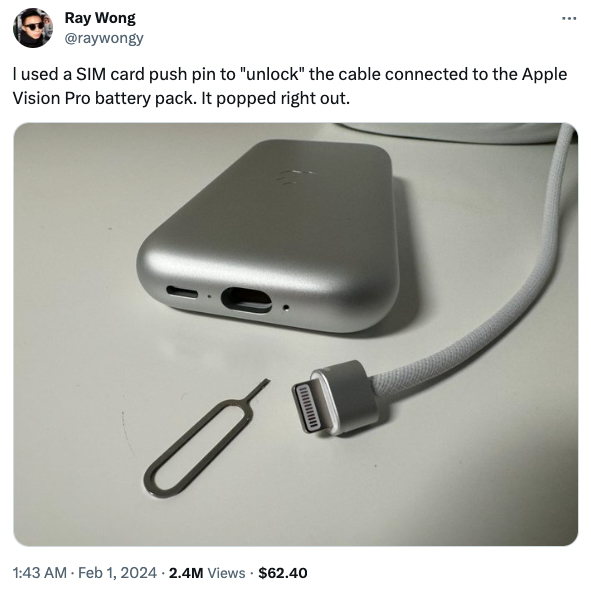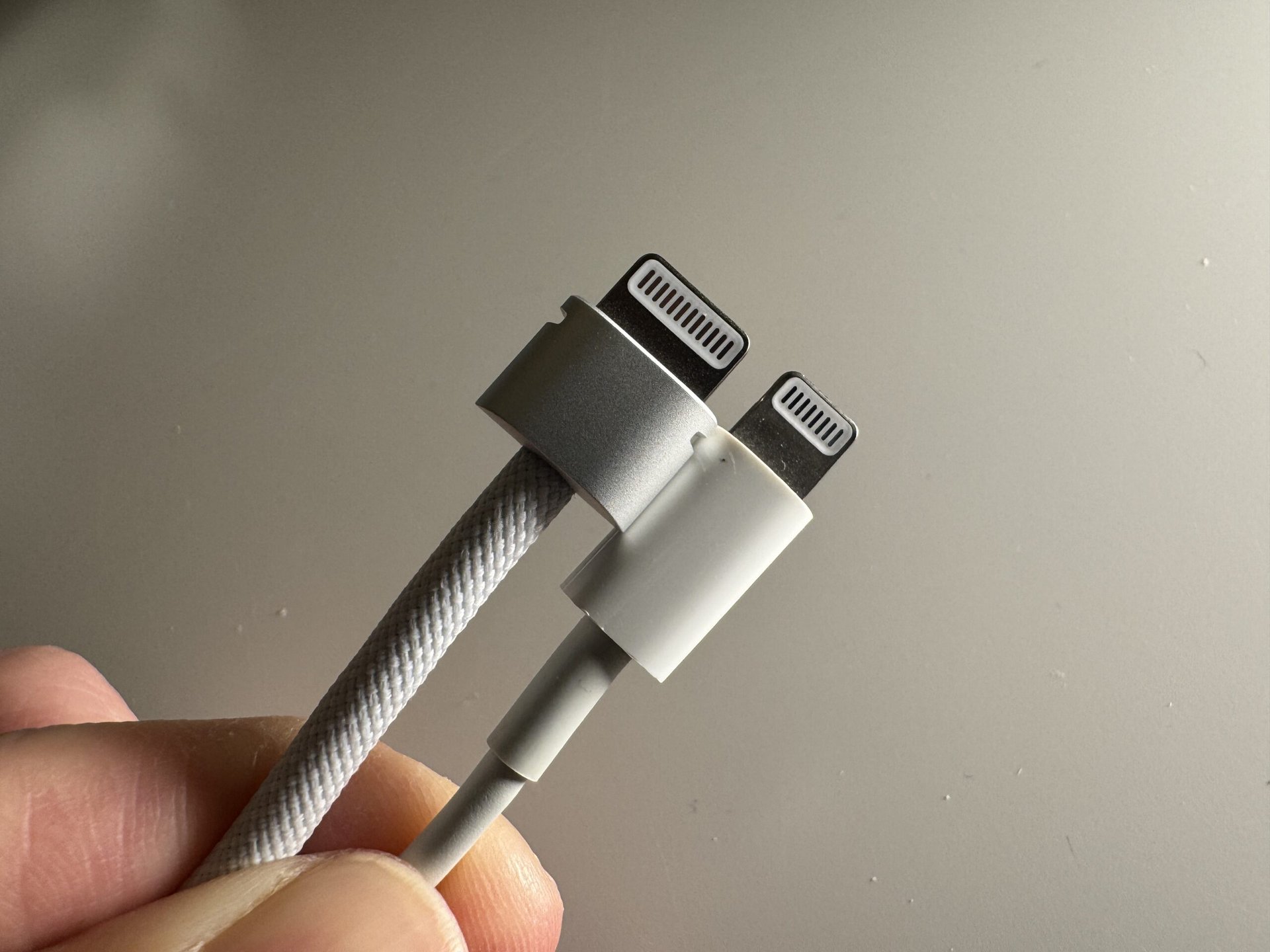Affiliate links on Android Authority may earn us a commission. Learn more.
Apple is still using a lightning connector, this time in a Pro Max avatar on the Vision Pro

- The Apple Vision Pro’s battery cable can be removed using a SIM push pin, revealing an oversized lightning connector and port.
- The Vision Pro’s battery only delivers power, so it could have achieved the same results with the regular lightning connector or even a USB-C port.
- Apple has not elaborated on why it developed a unique, oversized lightning connector for delivering power to the Vision Pro.
Before the iPhone 15 switched to USB-C, iPhones had used the lightning port for several years. This was a big pain point for users who had otherwise switched to USB-C on their other devices but had to carry a lightning cable around for just the iPhone. If you thought the lightning port and connector were dead, you’re mistaken, as Apple has given them new life in an oversized avatar on the Apple Vision Pro.
The Apple Vision Pro comes with an external battery pack that can be charged with USB-C. However, the connection between the battery pack and the Vision Pro headset is through a proprietary connector on the headset end. It was presumed that the cable connecting to the external battery pack could not be removed. But as journalist Raymond Wong discovered, you can use a SIM card push pin to release the cable. Surprisingly, the released cable has a lightning connector, but in an oversized avatar.
Wong has also shared pictures comparing this oversized lightning connector to a regular lightning connector, and you can see how much it has grown in width.
There are also images comparing it to a regular USB-C connector.
Apple doesn’t seemingly advertise the Vision Pro’s external battery pack to come with a removable cable, so most users will not be seeing this connector or port. Still, we cannot figure out why Apple did not just use a USB-C connector and port, especially since the Vision Pro’s battery will largely transmit only power and practically no data (other than those relating to its power state). Apple could have also seemingly gotten away with using a regular lightning connector and port, but it developed an oversized version of it specifically for delivering power to the Vision Pro. It is possible that the oversized lightning connector is better equipped to handle the Vision Pro’s power requirements, better than even USB Power Delivery.
Whatever the reason, the lightning connector and port are not dead, and Apple is still a few moves away from “USB-C everything.”


